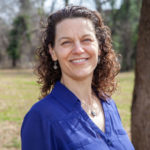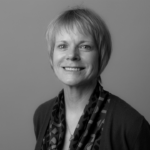
Susan Comfort: Team Care

Susan Comfort wants you to go beyond self care, which we’ve covered over the last two weeks, to team care. Yes, take care of yourself and your friends, then look after your team. She’s founder of Nonprofit Wellness, and this was part of our coverage of the 2021 Nonprofit Technology Conference. This week’s show is intentionally short, so you can spend more time taking care of self and team.
Listen to the podcast
Podcast: Play in new window | Download
Get Nonprofit Radio insider alerts!
I love our sponsors!
![]() Turn Two Communications: PR and content for nonprofits. Your story is our mission.
Turn Two Communications: PR and content for nonprofits. Your story is our mission.
Fourth Dimension Technologies: IT Infra In a Box. The Affordable Tech Solution for Nonprofits.
We’re the #1 Podcast for Nonprofits, With 13,000+ Weekly Listeners
Board relations. Fundraising. Volunteer management. Prospect research. Legal compliance. Accounting. Finance. Investments. Donor relations. Public relations. Marketing. Technology. Social media.
Every nonprofit struggles with these issues. Big nonprofits hire experts. The other 95% listen to Tony Martignetti Nonprofit Radio. Trusted experts and leading thinkers join me each week to tackle the tough issues. If you have big dreams but a small budget, you have a home at Tony Martignetti Nonprofit Radio.
View Full Transcript
Processed on: 2022-10-27T12:17:54.086Z
S3 bucket containing transcription results: transcript.results
Link to bucket: s3.console.aws.amazon.com/s3/buckets/transcript.results
Path to JSON: 2022…10…615_tony_martignetti_nonprofit_radio_20221031.mp3.551384569.json
Path to text: transcripts/2022/10/615_tony_martignetti_nonprofit_radio_20221031.txt
[00:02:08.01] spk_0:
Hello and welcome to Tony-Martignetti non profit radio big non profit ideas for the other 95%. I’m your aptly named host of your favorite abdominal podcast. Oh, I’m glad you’re with me. I’d come down with Arsene Asus if you poisoned me with the idea that you missed this week’s show, Team Care. Susan comfort wants you to go beyond self care, which we’ve covered over the last two weeks to Team Care. Yes, take care of yourself and your friends then look after your team. She’s founder of nonprofit wellness and this was part of our coverage of the 2021 nonprofit technology conference this week’s show is intentionally short so you can spend more time taking care of self and team Antonis Take two. Endowment Panel Takeaways sounds fascinating. Were sponsored by turn to communications. I just can’t wait for that. Pr and content for nonprofits. Your story is their mission turn hyphen two dot c o I can’t wait for endowment panel takeaways and by fourth dimension technologies I Tion for in a box. The affordable tech solution for nonprofits. tony-dot-M.A.-slash-Pursuant four D just like three D but they go one dimension deeper here is Team Care. Welcome to tony-martignetti non profit radio coverage of 21 N. T. C. You know what it is? It’s the 2021 nonprofit technology conference where we are sponsored by turn to communications Turn hyphen two dot c. O with me now is Susan comfort Founder of nonprofit wellness Susan Welcome back to nonprofit radio Thanks
great to be here [00:02:11.52] spk_0:
it was roughly a year ago last aPril when 2020 20 N. T. C. Was not in person. And we talked with uh mo abdullah about coronavirus and team care. [00:02:24.53] spk_1:
Indeed. And here we are a year later and we’re facing the same issues except worse. [00:02:30.79] spk_0:
Yes because it’s multiplied by because we’ve been in this for over a year. [00:02:36.05] spk_1:
Exactly. [00:02:36.99] spk_0:
Okay. And so your topic is very very similar. Team care. Not self care building resiliency in an era of burnout should be resilience should have been resilience. Not resiliency [00:02:50.69] spk_1:
building resilience building resiliency. I think they both work. [00:03:08.64] spk_0:
You do all right. I think one works better than the other. All right. I have to I’m not I’m not strictly I’m only a curmudgeon. I’m not a grammarian or uh Entomology. I’m not an entomologist. I’m just curmudgeonly. Got it for some reason. I see. Billion resilience. Alright. [00:03:12.81] spk_1:
Hey as long as you build it. I don’t care what you call [00:03:22.79] spk_0:
we’ll get. We’ll be resilient. We’ll be resilient. All right. So uh yeah we need to keep taking care of ourselves and our teams through this and and beyond right Beyond the pandemic. We still gotta be thinking about Team care. [00:03:27.81] spk_1:
Well let me ask you this. What does self care mean to you? tony [00:03:31.34] spk_0:
I can give examples. Is that what you is that what you [00:03:33.58] spk_1:
mean? Like it [00:04:17.89] spk_0:
means uh not so occasional daytime naps. It means um a glass of wine. Maybe. No not every night but several nights a week. Glass of wine after work. It means ending work at a decent time even know, Well, even before the pandemic, my home has always been in my office has been my home for about 15 years, maybe 20 years. So, uh, but you know, so I don’t have trouble closing the door. So there’s that boundaries around time, in terms, in other words, um, there’s some examples. Walk on the beach. I live across the street from the beach and the ocean. So walks on the beach. Examples. And why do I think it’s important because I can’t, I can’t be good to other people if I’m not good to myself first. And I, I take that to heart. And I think I take good care. I mean I exercise, I eat right? I’m cautious about too much meat and processed foods and things, you know, so there’s a lot, there’s a lot that goes into it for me [00:05:19.36] spk_1:
and we all have the same human body. And so we’re feeding it, we’re resting it, we’re hydrating it and we’re moving it. Those are physical kind of self care impetus is right that you just gave some great examples of, and we know that we’re in charge of self care, right? There’s nobody else in charge of our body. And we’re told that we’re in charge of self care. Hey, don’t forget to self care, take time for self care. Set your boundaries. Well, guess what in the nonprofit world. And in the education world where we’re increasingly working people aren’t so great at self care naturally on their own remind me of self care, but that doesn’t mean I’m going to do it or do it well. And [00:05:20.01] spk_0:
particularly we’re working in our homes, it’s so easy to, to lose the boundaries between work and personal. That’s where you’re not allowed in, you’re not allowed in after six PM or you know, but, but if you’re not accustomed to that, you got thrown into it in an instant, there was no, there was no teachings going on in, in, in february and early March about how to do this. You got, you got slammed with it. [00:07:25.73] spk_1:
And at first we saw it maybe as a benefit like, hey, no commute. But then we thought, ah, that commute was the one hour a day I had to myself or to listen to the radio or to listen to my book or to detach and create that boundary from work to home. Now. You’ve been working from home for a while, you’ve kind of gotten practice at this, but you’re right. Everyone else is kind of new to it. Not so good at it. And being told in a time of unprecedented stress and pandemic. Hey, don’t forget about self care when you know what, we probably weren’t good at it to begin with. And so that’s why, well that’s one reason why we focus on team care because we’re just not good at self care. And the second reason is especially in a world where we’re serving others were educating others were giving to others in the nonprofit world, we are usually, but it’s also because we’re in this unprecedented time, self care won’t cut it going back to the regular old normal we used to have isn’t gonna work, it wasn’t working then we weren’t caring for ourselves particularly well then. And it’s not getting any better with bad solutions on a new framework. So we have to take this new framework, a pandemic informed world and say, well, how are we going to do things differently next time when we return to the office is what’s going to be different when we return to our teams, how we’re gonna manage differently. How are we going to work from home differently? How are we going to communicate differently? All of these things are opportunities to reset our culture. So we, we coached teams, nonprofit schools, etcetera, how to take that world changing energy and reset your culture. So we’re actually turning our superpowers on each other, taking care of each other, which were really good at doing so that we can take care of ourselves better because having longevity in this career is crucial turnover is a silent epidemic facing the nonprofit and education worlds, some of its measured often it’s not, but if we don’t keep people in these jobs longer term, keep the relationships, keep the commitment, keep the knowledge, then we’re not going to do a very good job at educating Children are changing the world. [00:07:49.90] spk_0:
All right. You have some resources for for us taking care of ourselves. You have a personal stress prescription and a stressor scorecard. [00:07:59.84] spk_1:
Yeah, [00:08:00.29] spk_0:
we can. We first of all, can listeners get these somewhere or is it something you create on your own? You don’t need a template? [00:09:55.01] spk_1:
Well, both. You don’t need a template. We created it for you to use as a discussion tool or a self care tool, but you don’t need our form what we did and you can download it at non profit wellness dot org slash resources. What we did was put together a list of about two dozen evidence based stress relief solutions. The these are things that have been studied that are proven to both either lower your cortisol, the stress hormone is released when we’re stressed or to reset our bodily systems or to relax. S and there’s good and bad things on the list. Or quote good, quote bad, right? Like friendships you might think of as good, but some friendships are toxic right intoxication you might think of as bad. But actually you have a glass of wine some nights it’s good, you mentioned it as part of yourself care, right? But for some people it might be a challenge. Um I stopped drinking three years ago for me it was more of a challenge than a benefit. And so I cut it out because that was easiest, but everybody has to make their own decisions. Is it a glass of wine? Is it? None at all. Is that? Hey, I need to go out for happy hour more because I’m a little uptight. Like you get to make your decision on the personal stress prescription what works for you and I guarantee there’s stuff on the list. You’re already doing great, celebrate that. Do it more because that’s low barrier to entry if you’re already doing it. And then there’s stuff on that list that maybe you should pick up something new, something different, new world new strategies. And then there’s stuff on that list that you could really be doing with a team doing with somebody else and that’s going to help you actually do it have more fun, go longer. And those are the things that we need in our wellness, right? When we actually do it, when we have fun and when we go longer and harder, right? That’s what having a buddy or having a team and accountability aspect to our care. That’s what it does for us. And the research shows it. So we need team care, not self care. I mean not just self care, we need team care and self care, but we like to be a little bit polemic and say team care, not self care because we want to differentiate ourselves from everybody deciding self care, don’t forget. [00:10:20.55] spk_0:
Alright. Alright, but we need both. Right, so these are at nonprofit wellness dot org slash resources? I did not. Now I’m bringing out my curmudgeon again that I did not, I didn’t I didn’t uh I didn’t miss that. You snuck in template, It’s template template. How do you get template Maryland? You marylanders born and raised in Maryland. I was in New Jersey weren’t that far away, but it’s template, not [00:10:38.82] spk_1:
C [00:10:44.06] spk_0:
U R M U D G E O N. Well, because I hustled you about resiliency being wrong if [00:11:02.27] spk_1:
I want to talk real ball Marie’s I say would er and I say you can go down the ocean and you can walk on the beach all you want hon but you don’t have to invite me or you can have your own self. You want me to do a Maryland accent the whole time? tony I’ll do it. That [00:11:03.51] spk_0:
sounds annoying. Um So yeah, I [00:11:06.56] spk_1:
worked at a crab house five summers. I’ve got the Baltimore accent down pat. [00:11:10.16] spk_0:
You worked at a crab house. [00:11:12.14] spk_1:
Indeed a [00:11:13.25] spk_0:
serving, serving. [00:11:14.65] spk_1:
Yeah, yeah. Even after I was a vegetarian, I served recently killed esteemed crabs right onto your table. Dismember. [00:11:22.07] spk_0:
Alright, so as a vegetarian, is it inappropriate for me to ask you what what what type of crab meat you believe is best for crab cakes is the lump is the jumbo lump? [00:11:32.81] spk_1:
I’m a lacto ovo crab. Oh vegetarian so I’m authorized to speak on this matter. Of course it’s back fin [00:11:39.37] spk_0:
back. You [00:11:43.66] spk_1:
can put anything in the crab cake. But you want jumbo lump and very few breadcrumbs. [00:11:45.52] spk_0:
Wait wait, wait, wait. You’re saying it’s back then and jumbo lump. [00:11:49.37] spk_1:
Well, they’re the same thing. Jumbo lump is just the bigger chunks of back fin. [00:11:57.51] spk_0:
Right, well, right, the lump or jumbo lump, you get a mixture back then and some lumps usually in the top of the container in the bottom of the container. [00:12:02.47] spk_1:
If you say so, I pick my own crabs. tony If you say that’s what you get. That’s what you get. Just get the best crab meat you can buy in the biggest chunks you can. And if you’re like me, you can pick your own make your own crab suit, make your own crab cakes. Just not too much bread. Okay, it ruins the crab cake. [00:12:26.03] spk_0:
Right? Not too much. I agree. I just made a batch with very low gluten free plank. Oh, but it was £2 of crab meat. And I think A third, maybe I guess it was 2/3 of a cup. I think of [00:12:30.07] spk_1:
if we’re gonna be It’s Panko not plank. Oh, tony [00:12:34.46] spk_0:
Did I say plank. Oh did I say plank. [00:12:37.17] spk_1:
Oh, I’m [00:12:38.66] spk_0:
gonna play this back. No, Did I say plank. Oh that’s embarrassing. I know it’s Panko. [00:12:42.98] spk_1:
It sounded like it. You can edit that part out. [00:13:00.00] spk_0:
Alright, I’m not gonna edit it. No, no. I called you out twice template, I’m not gonna not gonna cheat and edit out. But that’s embarrassing. I know it’s Panko. Of course, it’s Panko. Thank you for correcting me. Alright. It’s very important to know what kind of crab meat is best. All [00:13:02.31] spk_1:
right. [00:13:04.65] spk_0:
So, All right. So, we take so we get these resources or we just develop our own [00:13:09.97] spk_1:
personal [00:13:11.17] spk_0:
prescription and stressor. And a scorecard. Scorecard works with the prescription. Is that how they work together? [00:14:11.59] spk_1:
Now? The scorecards under revision. So by the time your listeners here this, there might be a new one. We took the stressor. Scorecard which was based on the ace score card stands for adverse childhood experiences. And it’s actually a measure of childhood trauma. It’s quite triggering. But we took the a scorecard and we said, well, what’s the measurement of adult stress? There wasn’t one. So, we made one and we kept revising it and we’ve undergone another revision. Or instead of just ranking your stressors. And these are societal stressors, not work stressors. So, it might be identity related to who you are in society. It might be a circumstance related to what you’re facing right now in your life. So, a circumstance could be like a divorce or a food allergy that causes you stress an identity might be your gender, your race or your sexual orientation. That may or may not given where you are in society. May or may not cause you stress. So, if you know the score when you walk in the door, if you know your stress score from sin Society, then technically we should know who gets the most wellness resources. That would be wellness equity. If we knew who got the most stressed, then they would get the most wellness resources. But the way it is now is we give the corporate wellness resources because it’s a $7 billion dollar industry in the corporate workplace. [00:14:29.40] spk_0:
But the [00:14:48.96] spk_1:
nonprofit world and the education world don’t really get sort of wellness benefits or like extra help. Yet I would say that we are probably among the most stressed in society. Not only do we face a lot of stressors because of who we are and what we face in our lower incomes, but also we have really stressful jobs that are, that depend on us to literally change the world or change people’s minds and that is not the same as a bank job. Sorry. It’s just not. So we have more stress and we should get more resources than we do. [00:16:16.89] spk_0:
We should get more resources than we do right? We, we definitely should. Yes. And at least as much as if you’re gonna write, if you’re gonna do it equitably at least as much as you see in the, in the corporate side, it’s time for a break turn to communications, the relationships, the media relationships that you want to have so that you can be heard when you need to be heard when the news merits attention on your work, your opinion of what’s happened. You need the relationships turn to can help you build them. They are themselves former journalists. So they have built relationships on the journalist’s side so they know how to do it and they know what not to do so that you don’t defeat your attempt at creating these these donor relationships. These media relationships right turn to can help you build up the relationships. So when you need to be heard you can be turn to communications. Your story is their mission turn hyphen two dot c o Now back to team care. Work [00:17:12.30] spk_1:
hard. I didn’t go into those which is under revision is the strength the growth and the joy that we achieve from these identities and circumstances. So we actually put two scores on the new one where you can rank your stress but you can also rank your growth and joy. So for example, I’m a woman and I identify as queer being a woman and a white woman at that in society has not caused me a lot of stress but I would say some maybe a low amount of stress being queer in society has not caused me very much stress. But when I look at both of those and I think of how much growth enjoy being a woman has brought me and how much growth enjoy being bisexual has brought me as a part of the queer community that’s off the charts. I I rank much higher my growth and joy than I do my stress. And so in that way I go, hey, what a bonus that I have had this stress in my life. What an opportunity for growth and joy that this stressful thing brought me. And that puts it in a whole new frame for me I think, yeah, I face a lot of stress in my job and in my life. But look at how much I’ve grown and how much joy I get out of life. And so that’s our stressor, Scorecard revision. It’s now called the stressor and resilience scorecard because again, building resilience or resiliency is super important in a time of constant change and stress, [00:17:47.69] spk_0:
Thank you for saying resilience first and then or or resiliency as the second alternative. Alright, so how do we then bring, I’m relentless If nothing else, I don’t let go. So how do we bring this now to a team level because it’s his team care and not self care. I’ve been wagging my finger, listeners can’t see, but I’m telling you, I’m wagging my finger. We’re distinguishing ourselves from all the all the nannies who say take care of yourself, how we convey this now to team care. [00:18:31.65] spk_1:
Well, I’m glad your listeners can’t see us because there’s nothing better than nonprofit types wagging their fingers at other people telling them what they should do, right? Um it’s tony It’s really simple. All we have to do is talk about it. So bring a brown has many best selling books about vulnerability and shame and courage and she opines I mean the research show shows that when you are vulnerable, you inspire empathy and it’s really the height of courageousness to be vulnerable, it’s not opposites, they’re two sides of the same. [00:18:39.93] spk_0:
Absolutely, [00:20:15.22] spk_1:
yeah. And so if you tony are a vulnerable leader and you’re courageous enough to say, hey, I’ve been struggling with my physical health in this way. So I’m going to take walks on the beach every morning and I’m going to have a glass of wine every night because that’s my plan for self care and I want you all to support me in that by not scheduling meetings during my walk time and not making fun of my wine selection or whatever it is, right? But by talking about it, people go, oh, tony is being vulnerable with me. That means I can be a little vulnerable with him and say, well, tony I’m struggling with some things in my physical health and I would like your support on this. Whatever it is, it doesn’t mean somebody has to go on the beach with you. It just means that they have to support and know that that’s something that you need for your mental or physical health. And when we talk about ourselves, we, we become a little vulnerable, but we keep ourselves safe usually. And then other people have empathy for us because we made ourselves vulnerable and that builds trust and trust is the elusive element that so many teams are missing. And so if wellness can be kind of a shortcut to that great, But it just means we have to talk about it. That’s why we create discussion tools. We want you to be able to talk about this with your team openly vulnerably and honestly, but also like have, you know, have something to get out of it. Maybe you all could support a new direction with your team care based on your discussions. Maybe instead of, you know, pastries in the kitchen, you’re gonna have nuts in the kitchen because it’s healthy or maybe you’re gonna go for group walks or, you know, measure your steps together. Those are all physical things. But where we really get into the interesting stuff is when we talk about mental health things, which is a little less accepted at work. But that’s the most important thing of of what we’re doing [00:20:33.61] spk_0:
okay before we get to mental health? Let’s let’s keep a little simpler. A little safer. How do we just Open these conversations just like are we are we having a meeting for this purpose or is this 10 minutes? Uh, at the beginning of a one hour meeting all [00:22:18.09] spk_1:
of the above. So, you know, if you have a meeting about it, then that sounds like a wellness committee and that would be great because a wellness committee could definitely, you know, be a diverse group of voices that pushes the agenda forward rather than like one yoga nut in the office, which is who I used to be, right. But if you don’t have time for a wellness committee or you’re not ready for a wellness committee yet. No problem. Just at the beginning of every meeting, maybe you ask a checking question that has to do with health. So like what did you do already today to support your mental or physical health? That’s a quick check in question. And people will think about, what did I do today? What does walking my dog count? Maybe walking my dog counts as physical and mental health. Yeah. Walking my dog. I’m gonna walk my dog more because that’s really good for health, right? It makes them think about things in a different way and it makes them share. Maybe people didn’t know you had a dog. Maybe somebody would like to go for a dog walk with you. Maybe somebody, you know, would like to bring their dog into the office and they know that since you have a dog, you’re going to be more open. And I mean there’s many directions these conversations can go, but you just have to open it up. So it’s usually like a checking question or maybe a lunch and learn or a brown bag lunch where everybody could talk about these things, but I would say set and set a topic. Um maybe it’s nutrition. Maybe it’s some specific aspect of nutrition. Maybe it’s movement. You know, these are things that are safe and yet they affect our mental health. So if we start talking about physical things that affect our physical health, then we’re going to start to get into, well, you know what, when I take, when I exercise, I feel happier. Well, that’s mental health. And so you’re gonna start talking about mental health, even though you’re talking about how you’re feeding, moving and resting your body, which is physical. [00:22:29.57] spk_0:
Mm Okay, by the way, if you were the yoga nut, then I guess you would have been pushing up against me the curmudgeon if we would have been in the same workplace. [00:22:39.23] spk_1:
But [00:23:13.65] spk_0:
I’m not, you know, this is a recent, a recent um, revelation for me that I’m a little curmudgeonly. I see it in my neighborhood. Like, you know, my, my neighbor across the street has has a big piece of construction waste in a role that that, that the garbage people are not gonna pick up because it’s been there for over a week. You have to put your garbage in a can. It’s gotta be, it’s gotta be an authorized can with wheels and it’s got to face the right way, but they’re not gonna pick up this guy’s big tarp, but he leaves it out there, you know, that that bothers me looking at it right now. It’s annoying. It [00:23:15.46] spk_1:
sounds like it causes stress. Well [00:23:17.71] spk_0:
it shouldn’t be there. It’s not part of it is the injustice of it because he knows it’s not gonna get picked up. It’s been there over a week and we have garbage pickups every monday and friday. So it’s not going if it didn’t go the first day, it’s not going the next or the next after after that. So it’s the injustice of it. I I follow the rules he should do. [00:23:36.19] spk_1:
I think neighborhood, [00:23:54.70] spk_0:
neighborhood beautification, you know, put that tarp out there on a big role, may be the next neighbor will put a little load of concrete after he after he takes his grill out of the concrete slab that has been in and he leaves a little two ft chunk pile of broken concrete there [00:23:56.26] spk_1:
goes the neighborhood [00:23:57.32] spk_0:
liberties and then the next and the next next thing I have to sell my home [00:24:13.58] spk_1:
that would be terrible. Hey, get a big piece of chalk and create some sort of art out of that rolled up tarp. Maybe it’s a caterpillar, maybe you write a note on the street in chalk like I don’t know, I can’t think of a [00:24:16.68] spk_0:
that [00:24:17.43] spk_1:
that would be curmudgeonly. You [00:24:18.68] spk_0:
want that kind of [00:24:25.57] spk_1:
hilarious. You used to be a comedian. Be hilarious. tony something funny, make them laugh, you [00:24:57.43] spk_0:
know what I was laughing about recently. I learned. David Sedaris has a home in my town and a lot of people in town have pretentious names on their homes. Like when I moved here it was seven seas. I had that the first thing I had a contractor to rip that stupid seven seat. First of all, it’s the atlantic ocean, it’s not a C. So it’s misnamed and second of all these names are pretentious David Sedaris has his house name is C Section. How good is that? How brilliant is that? Go right to the heart of the pretense. And I, so if I had thought of C section, I would have had a contract and make those letters but he took that one. But yeah, you’re right. I could put something in chalk. I have chalk too because I have uh [00:25:14.12] spk_1:
Laughter out loud is one of our top 12 immune boosters. We [00:25:19.16] spk_0:
just [00:25:38.70] spk_1:
topic because laughter laughing out loud actually is one of the 12 immune boosters that are masters of public health interns research to find the cheap easy, Absolutely. Scientific based immune boosters and laughing out loud is at the top of the list. So you will boost your immune system and everybody on the street if you can figure out something funny to do with that rolled up tarp, I will follow up with you tony to figure out what it [00:25:47.00] spk_0:
was. Okay, the caterpillar is a good idea. I’ll keep, I could make it a big turd but that’s kind of [00:25:54.04] spk_1:
yeah, [00:25:55.24] spk_0:
you know like [00:25:56.21] spk_1:
dinosaur turd, you know like make up north Carolina dinosaur breed and say like this is the ancient, you know, [00:26:03.79] spk_0:
it’s a fossilized brontosaurus turd. [00:26:06.87] spk_1:
Exactly. [00:26:08.24] spk_0:
You’re [00:26:09.41] spk_1:
getting there. You’re getting there. [00:26:10.45] spk_0:
I’m amusing myself not. You know, I’m sorry. But that’s the wellness. Alright. [00:26:15.17] spk_1:
Just did it did it for yourself. Right then. It makes you laugh rather than making you stressed out. [00:26:20.09] spk_0:
Okay. But I’d like something for the community to be able to chuckle at two. [00:26:23.98] spk_1:
So [00:26:24.43] spk_0:
All right, this is not [00:26:27.35] spk_1:
or anything but your tony-martignetti and that’s not [00:26:48.79] spk_0:
right. Okay. I write I know my place. I know my place. All right. So this has turned into an individual mental health exercise which is not supposed to be so But this curmudgeon thing is just evolving in my mind about how I’m you know, traditions, there’s importance around laws and tradition and you know, so human. I might have clashed. Uh But I wasn’t curmudgeonly when we would have been in the same workplace. This is only within the past few weeks. I’ve come to this revelation [00:26:57.95] spk_1:
blame it on the pandemic. That’s what we’re all doing [00:27:01.28] spk_0:
many [00:27:02.07] spk_1:
bad personality traits on your lifetime [00:27:05.77] spk_0:
practice. It’s a lifetime practice, right? It is [00:27:09.41] spk_1:
absolutely. [00:29:41.20] spk_0:
So, you know in this phase I have curmudgeonly maybe in six months or six years. I’ll be out of it. It’s time for a break. Fourth dimension technologies. I. T. Infra in a box. It’s the I. T. Buffet. You go through the line. you take what looks appealing to you what fits within your budget, what fits within where you are technology wise like help desk security assessment, planned planning and budgeting, moving to the cloud and there is more on the buffet line. You choose what works for your nonprofit, leave the rest behind. You needn’t buy it, you needn’t pay for it. That’s for D’s I. T. Infra in a box. Fourth dimension technologies tony-dot-M.A.-slash-Pursuant as you know It’s time for Tony to take two. The long awaited endowment panel takeaways. Yes I was part of an endowment panel about a month ago or so graciously hosted by an ex unite uh part of nexus marketing. And this panel was called endowment excitement, fundraising and management. I was the fundraising part. And the other three folks were the management part. Either the fundraising part is very shallow because only 1 to 3 ratio or it takes three of them to equal the uh prowess of the fundraising Panelist. Well I’ll leave that to you for you to decide. And the way you can decide is to read the takeaways that I have on the blog. The panel takeaways you will find at plant giving accelerator dot com plan Giving accelerator dot com And you click blog and the takeaways are right there That is Tony’s take two. We’ve got just about a butt load more time for team care with Susan comfort because this week’s show is shorter so that you can do the care that Susan is talking about, you have some skills like you your your workshop identified but you have some like skills we can practice. Yes, you’re stressed for our teams and ourselves. Yes, [00:29:51.99] spk_1:
I think this is a really good one. This is a really good one. Okay, so what I want you to do is look out the window and anyone listening, just look out the window right now, Tony is going to be looking at a giant tyrannosaurus turd across the [00:30:01.49] spk_0:
alright. [00:30:02.98] spk_1:
And uh you want to name five things you see out the window besides the brontosaurus turd, tony go [00:30:17.91] spk_0:
the ocean, the walkway, the the little wooden walkway to the ocean. My neighbor’s homes who I don’t know too well I’m a little curmudgeonly and there’s my, my front yard landscaping which I’m very proud of. [00:30:26.27] spk_1:
Excellent. What’s one of the parts of the landscaping? That’s number five. [00:30:31.73] spk_0:
Oh the mexican petunias, They’re just starting to bloom [00:30:34.90] spk_1:
awesome. [00:30:35.70] spk_0:
Well grow, they’re not blooming yet but they’re growing out of the ground green. [00:31:08.58] spk_1:
You can see that their roots have taken hold. So that’s, that’s part of a mindfulness exercise where you name five things, you can see four things you can touch three things you can hear two things you can smell and one thing you can taste and it’s a, it’s an anxiety arresting exercise where if you’re feeling anxious, you’re worried about stuff you’re thinking into the future. You’re worried about the past. You come back to the present moment and how do you do that? Five things you see four things you can touch name them. Touch them. See them, say it out loud. That will bring you back to the present moment forces you because you’re engaging all five of your senses. [00:31:21.19] spk_0:
Yeah. [00:32:15.28] spk_1:
And that’s the best thing we can do for our mental health is be mindful. The second best thing is to move our bodies because moving our bodies trains our brain and so being mindful, being more mindful, being better mindful. These are all things we can do are things we can all do, being more movement, having better movement. Being movement oriented. These are things we can all do no matter how much we move, no matter how much we’re meditating or mindful. But mindfulness is just being aware of the present moment, but it takes us out of that worrying cycle, it takes us out of that rumination, prefrontal cortex and actually forces us to be in the present moment, which is a huge skill. I practice it every day for seconds per day. I’m I’m aspiring to get up two minutes. You know, just being mindful, Being present. That is a huge skill that I have been practicing a ton and that is a relief that I don’t have to become a meditator. I can just be a mindful person. What a relief. I don’t have to sit and meditate. I can just be mindful. [00:32:24.14] spk_0:
Would you count down the five again please. Five things. You can [00:32:27.19] spk_1:
see more things. [00:32:30.60] spk_0:
You can touch, three [00:32:35.80] spk_1:
things you can hear. Two things you can smell and one thing you can taste. [00:32:40.65] spk_0:
Okay, [00:32:42.18] spk_1:
so [00:32:42.58] spk_0:
you [00:32:44.90] spk_1:
just start in the moment like, oh I have a, you know old coffee taste in my [00:32:50.77] spk_0:
mouth. It’s [00:32:51.76] spk_1:
just that moment. That’s what I’m experiencing in this moment right now, you know? [00:32:56.86] spk_0:
Yeah. [00:33:12.79] spk_1:
So the skill that I would ask everyone to practice is just being present, just taking a present mindful breath several times a day. We take 20,000 breaths in a day. So try and make like three of the mindful ones, maybe 10. You know those are skills we can always practice and always improve and they’re actually good for your brain. It’s not just like woo, yoga teacher stuff. [00:33:21.51] spk_0:
I like being mindful around food that I’m actually tasting it. I’m enjoying the texture smell. I like to I can smell the food before I taste it so that I get an extra sense of taste because the the aromas wafting over my palate. [00:33:39.45] spk_1:
Yeah, like food. Like I’m going to have some sort of chickpea thing for dinner and I’m anticipating those chickpeas, you can cook the food mindfully and like be in the moment while you’re cooking and appreciating those textures before they get soft in the oven or you know, just all of the moments of food. It’s not just smelling it and eating it. It’s the anticipation, the preparation, the cleaning up the discussion about it, the laughs that you had over the meal. Like if you could be present for all of that, amazing. [00:34:10.57] spk_0:
If we spend a little more time, I’ll give you your own your own show on non profit radio you don’t have to be. We’ve already been like a half an hour because I went on a diatribe about homogeneous and third and we turned it into a personal thing for me. Well, I’m the center of the universe. So I think that’s appropriate. We [00:34:27.41] spk_1:
all are the center of the universe. In fact, we all are of our own little universe. Amazing. [00:34:34.31] spk_0:
Oh, so that’s not so that’s not. [00:34:38.97] spk_1:
But that’s why people love talking about themselves because they’re the center of the universe. And if you ask me a question of myself about myself. Well, thank God, somebody noticed that I’m the center of the universe. I would love to tell you about my food or my exercise or when I am most present. Yes, I would like to tell you about that because I love talking about myself. We all love talking about ourselves in some way. [00:34:59.04] spk_0:
We do some, some of us more than others, [00:35:01.26] spk_1:
some more than others. You know, you could just go on clubhouse and do your show their tony Have you thought about that, [00:35:06.57] spk_0:
know what is clubhouse? [00:35:08.70] spk_1:
Well, that’s a that’s a topic for another day. It’s an infant only iphone only app that is sort of taking over the social media world. [00:35:30.37] spk_0:
We live obviously dated myself. I’m 59, so I’m not hiding. So I’m not familiar with clubhouse. Um, let’s see. Well, Alright, where can we spend a little more time? Susan comfort. Um, I don’t know. You tell me you’re the, you’re the person who thinks about this all the time. I only, [00:35:35.50] spk_1:
I think everybody should stop listening and go outside and take a walk there listening while at [00:35:41.30] spk_0:
the end of it. Don’t stop now. Keep listening until the end. [00:35:44.53] spk_1:
No, you should stop. Stop now. There’s nothing of value coming later. Stop now. Turn it off. They won’t really tell me [00:35:51.26] spk_0:
you’re killing my show. They’re not going to [00:35:53.46] spk_1:
turn it off. They’re addicted to you. [00:35:56.81] spk_0:
I [00:35:57.00] spk_1:
can’t wait to see what curmudgeonly thing you’re gonna say next. [00:36:01.61] spk_0:
Alright, so what do you want people to do? Stop, [00:36:13.42] spk_1:
I want, I want to stop the interview. I want people to go actually take care of themselves, but in a team because that’s what I’m talking about? Team care, not health care. No, we usually end our trainings 10 minutes before the hour because we don’t want people to be back to back to back with meetings all day because then guess what? You don’t have any time to take care of yourself? So if anybody ever asks me if they like, do I have any other questions or what else should we do? I say we should stop doing this thing and go take care of ourselves. Go outside and take a walk on the beach. tony [00:36:35.98] spk_0:
Okay, I’m gonna end the show which you so put together with the little sponsor message I have to put in and my tony take two and a blah blah blah. This is gonna be about a 36 or 37 minute show and usually they’re more like 45 [00:36:52.88] spk_1:
40 [00:36:55.62] spk_0:
five. I’m cutting myself short. No, they’re more like 50 to 50 to 60 minutes is 5050 50 [00:37:00.94] spk_1:
I have to say I can talk about this stuff for hours. [00:37:04.31] spk_0:
No, no, no, we’re taking your advice now. [00:37:15.97] spk_1:
No, I’m just saying have me back people can go listen to me on youtube, whatever, but you don’t need me. People need to go take care of themselves tony you’re keeping them from it. You [00:37:17.91] spk_0:
were just teasing You were just teasing saying I can talk about this forever. I’m saying no, [00:37:22.30] spk_1:
he said shut [00:37:22.83] spk_0:
it off. So we’re shutting it off. Alright, we’re building this show around your advice. Alright, great. Susan comfort. Your pronouns, what are your pronouns [00:37:33.64] spk_1:
she her and [00:37:46.22] spk_0:
next time. Okay, I understood some of that. Susan comfort founder. non profit wellness, you can get the resources that you talked about the personal stress prescription and the new updated stressor and something else? Scorecard, [00:37:57.54] spk_1:
resilience, [00:38:00.66] spk_0:
stressor and resilience not resiliency score card at nonprofit wellness dot org slash resources. All right, Susan, thank you very [00:38:08.42] spk_1:
much. Hope to talk to you soon again on the beach. [00:39:13.61] spk_0:
I’m sure you will. I’m sure you will. Thank you. And thanks to each of you for listening to nonprofit radio coverage of 21 NTC, the 2021 nonprofit technology conference next week. It will not be a replay of the fermentation show. I give you my word if you missed any part of this week’s show, I beseech you find it at tony-martignetti dot com Were sponsored by turn to communications. Pr and content for nonprofits. Your story is their mission turn hyphen two dot c. O. And by fourth dimension technologies i. Tion for in a box. The affordable tech solution for nonprofits. tony-dot-M.A.-slash-Pursuant four D. Just like three D. But you know, they go one dimension deeper. Our creative producer is claire Meyerhoff shows social media is by Susan Chavez. Marc Silverman is our web guy and his music is by scott stein. Thank you for that. Affirmation Scotty B with me next week for nonprofit radio big nonprofit ideas for the other 95% go out and be great











 As part of our continuing 21NTC coverage, Rubin Singh returns to help you focus on what matters in CRM selection. To keep you safe from a serious misstep, he also shares his thoughts on what else might be the problem, besides your CRM database. Rubin is CEO of
As part of our continuing 21NTC coverage, Rubin Singh returns to help you focus on what matters in CRM selection. To keep you safe from a serious misstep, he also shares his thoughts on what else might be the problem, besides your CRM database. Rubin is CEO of  Stephen Tidmore from
Stephen Tidmore from